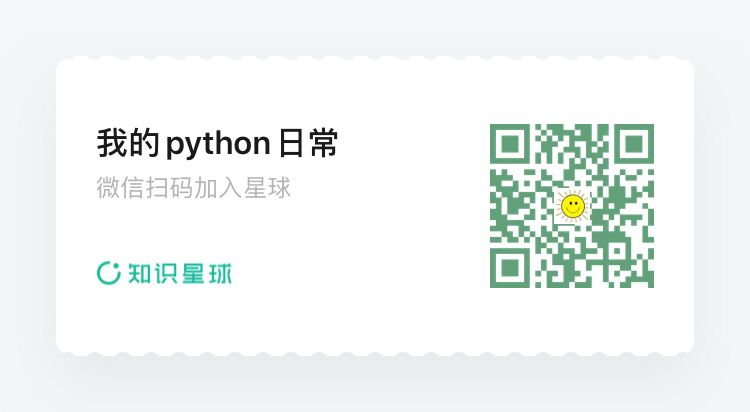使用prompt_toolkit实现mysql交互式终端工具
1. prompt_toolkit
prompt_toolkit是一个专门用于实现交互式终端工具的python库,它支持代码补全,自动提示,查询历史,语法高亮,可以让你快速的实现一个可交互的终端工具,这在需要交互的场景下非常受欢迎,本文将带你实现一个mysql客户端交互工具,实现与mysql服务器的交互。
首先,进行安装
pip install prompt_toolkit
2. prompt 接收用户输入
既然是交互式工具,就必须能够做到与用户交互,prompt函数可以接收用户在终端的输入
from prompt_toolkit import prompt
def main():
text = prompt("> ")
print('You entered:', text)
if __name__ == '__main__':
main()
启动程序后,在终端输入hello world, 得到"You entered:hello world" 的输出同时程序运行结束。实践中,与用户的交互是持续的,直到用户输入退出的命令,因此,需要在程序中使用while循环不停的接收用户的输入
from prompt_toolkit import prompt
def main():
while True:
text = prompt("> ")
if text == 'quit':
print("退出程序")
break
print('You entered:', text)
if __name__ == '__main__':
main()
2. 创建数据库连接
为了能够与数据库进行交互,需要在程序里创建一个数据库的连接,为了降低难度,创建数据库连接所需要的参数直接硬编码在脚本里, 我使用mysql-connector库与mysql进行交互,安装命令
pip install mysql-connector
创建mysql的连接
import mysql.connector
mydb = mysql.connector.connect(
host="101.201.37.248", # 数据库主机地址
user="manager", # 数据库用户名
passwd="3243Wdj!$dkwf44", # 数据库密码
port=1348,
)
mycursor = mydb.cursor(dictionary=True)
3. 实现对数据库的交互
from prompt_toolkit import prompt
import mysql.connector
mydb = mysql.connector.connect(
host="101.201.37.248", # 数据库主机地址
user="manager", # 数据库用户名
passwd="3243Wdj!$dkwf44", # 数据库密码
port=1348,
)
mycursor = mydb.cursor(dictionary=True)
def main():
while True:
text = prompt("> ")
if text == 'quit':
print("退出程序")
break
try:
mycursor.execute(text)
datas = mycursor.fetchall()
except Exception as e:
print(e)
else:
print(datas)
if __name__ == '__main__':
main()
启动程序,在终端里输入命令并回车
show databases
程序将执行show databases命令并返回结果
[{'Database': 'information_schema'}, {'Database': 'automated_testing'}, {'Database': 'stumanager'}]
上面的逻辑是不完善的,我们所执行的sql语句大致可分为两类,一类是有返回值的比如select语句,一类是没有返回值的比如insert语句,我使用了一个简单的方法来区分它们
def main():
while True:
text = prompt("> ")
if text == 'quit':
print("退出程序")
break
try:
mycursor.execute(text)
rowcount = mycursor.rowcount
if rowcount >= 0:
mydb.commit()
print(f"{rowcount}行数据受影响")
else:
data = mycursor.fetchall()
print(data)
except Exception as e:
print(e)
mycursor.rowcount是受到sql语句影响的条数,如果这个值大于等于0说明是在执行修改删除动作,如果是-1,则表示是查询类操作。
4. 加入语法高亮
使用语法高亮能让我们的终端工具更加漂亮,编写的sql语句中的关键字更加突出
from pygments.lexers import MySqlLexer
from prompt_toolkit.lexers import PygmentsLexer
def main():
while True:
text = prompt("> ", lexer=PygmentsLexer(MySqlLexer))
5. 加入自动补全功能
下面是代码改动的部分
from prompt_toolkit.completion import Completer, Completion
class MySimpleCompleter(Completer):
def get_completions(self, document, complete_event):
completions = ['create', 'select', 'insert', 'drop',
'delete', 'from', 'where', 'table']
word_before_cursor = document.get_word_before_cursor()
completions = [c for c in completions if c.startswith(word_before_cursor)]
for completion in completions:
yield Completion(completion, start_position=-len(word_before_cursor))
def main():
while True:
text = prompt("> ", lexer=PygmentsLexer(MySqlLexer), completer=MySimpleCompleter())
6. 保存历史命令
下面是代码改动部分
from prompt_toolkit.history import FileHistory
def main():
history = FileHistory('my_sql.txt')
while True:
text = prompt("> ", lexer=PygmentsLexer(MySqlLexer), completer=MySimpleCompleter(), history=history)
在终端输入的命令都会记录在my_sql.txt里,下一次启动程序时,通过键盘的上上下键就可以选择之前输入过的命令,实现快速输入
7. 使用表格展示查询数据
虽然前面实现了数据的查询,但是展示的数据很难阅读,接下来的目标是使用表格展示他们,实现
from prettytable import PrettyTable
def show_data(lst):
if not lst:
print("未查到数据")
return
data = lst[0]
coumns = list(data.keys())
table = PrettyTable(coumns)
for row in lst:
row = list(row.values())
row = [str(item) for item in row]
table.add_row(row)
print(table)
8. 完整代码与效果
import mysql.connector
from prompt_toolkit import prompt
from pygments.lexers import MySqlLexer
from prompt_toolkit.lexers import PygmentsLexer
from prompt_toolkit.completion import Completer, Completion
from prompt_toolkit.history import FileHistory
from prettytable import PrettyTable
mydb = mysql.connector.connect(
host="", # 数据库主机地址
user="", # 数据库用户名
passwd="", # 数据库密码
port=3306,
)
mycursor = mydb.cursor(dictionary=True)
class MySimpleCompleter(Completer):
def get_completions(self, document, complete_event):
completions = ['create', 'select', 'insert', 'drop',
'delete', 'from', 'where', 'table']
word_before_cursor = document.get_word_before_cursor()
completions = [c for c in completions if c.startswith(word_before_cursor)]
for completion in completions:
yield Completion(completion, start_position=-len(word_before_cursor))
def show_data(lst):
if not lst:
print("未查到数据")
return
data = lst[0]
coumns = list(data.keys())
table = PrettyTable(coumns)
for row in lst:
row = list(row.values())
row = [str(item) for item in row]
table.add_row(row)
print(table)
def main():
history = FileHistory('my_sql.txt')
while True:
text = prompt("> ", lexer=PygmentsLexer(MySqlLexer), completer=MySimpleCompleter(), history=history)
if text == 'quit':
print("退出程序")
break
try:
mycursor.execute(text)
rowcount = mycursor.rowcount
if rowcount >= 0:
mydb.commit()
print(f"{rowcount}行数据受影响")
else:
data = mycursor.fetchall()
show_data(data)
except Exception as e:
print(e)
if __name__ == '__main__':
main()
效果图


扫描关注, 与我技术互动
QQ交流群: 211426309

